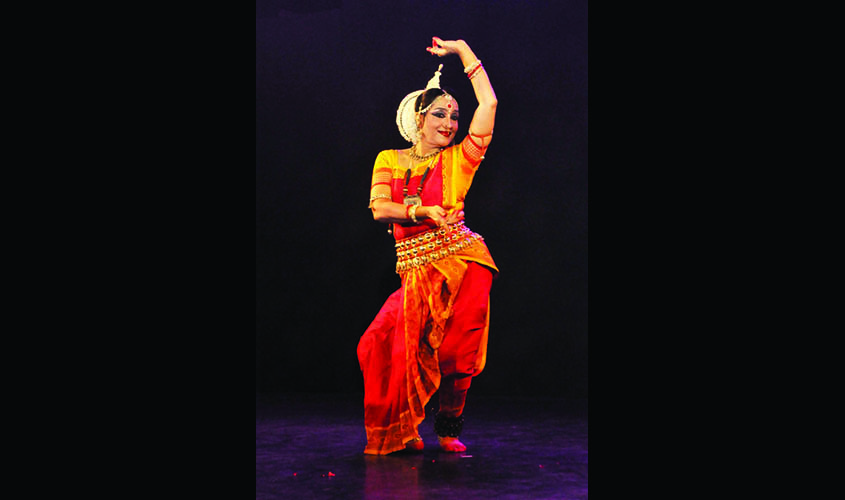The classical dance form Odissi is evolving with the times as more and more dancers incorporate elements of drama and storytelling into their performances. Ranjana Gauhar is one of the finest exponents of this new Odissi, writes Gaurie Dwivedi.
When one meets the classical dancer Ranjana Gauhar, one is instantly taken by the charm and grace of one of the senior most exponents of Odissi dance, an art form that she has been learning, teaching, performing and improvising for the last four decades.
And as we sat down over a cup of coffee, Gauhar explained at length how she views the constant process of creating new paradigms within the existing grammar of classical dance. Pushing boundaries to create new repertoires to reach out to audiences that may not be aware of the finer nuances of this art—this is a constant challenge that artistes like Gauhar are addressing.
Indian classical dance forms, despite having reached almost every part of the world—due to India’s push towards soft diplomacy and international cultural ties over the last 50 years—have also undergone a paradigm shift. Gone are the days of lengthy solo dance recitals that lasted several hours. The audience’s tastes have changed and both the art and artistes have adapted to it, explains Gauhar, a Padma Shri and Sangeet Natak Akademi awardee who has been creating dance-drama productions for the last 29 years.

Increasingly, contemporary themes and socioeconomic issues are being looked at through the prism of this art. From addressing issues related to the girl child, to spreading the message of harmony, to even highlighting the government’s efforts in regard to the Swachh Bharat Abhiyan, to bringing awareness related to sex education—Odissi dancers are evolving and attempting to connect with the audience with a clear message.
They are now more open to using theatrical elements, like dramatic lighting and props, and are even exploring the possibility of weaving dialogues, multiple characters and powerful narratives into their dance pieces.
Some productions have even used yards and yards of fabric that act as a “sutradhar”, or the main link between different stories, ensuring crisp narration, uniqueness of the creation and a sustained engagement with the audience.
Some of Gauhar’s earlier productions include Chitrangda, based on Tagore’s timeless drama about the princess of the Kingdom of Manipur and Arjuna; Nal Damayanti, a story that dealt with the relationship between King Nal of the Nishadha Kingdom and princess Damayanti of Vidarbha Kingdom—a drama that Gauhar has herself interpreted differently in the last 20 years, reflecting the constantly evolving nature of art.
“My latest presentation, Kabir, is as relevant today as ever. The universal message of love, peace and harmony was the central theme. We are trying to take it to a global audience due
Despite the universal appeal of Kabir’s poems and the powerful messages they convey to us, dance adaptation of abstract concepts is perhaps the most challenging aspect of creating new productions.
Asked about where she sees classical dance in the next decade, Gauhar concedes that the future does not belong to solo dance recitals with preferences tilting in favour of dramatised narration of stories that typically need multiple performers and large setups.
Gauhar, who was initiated into drama early in her life, says dancers will need to find that fine balance between traditional repertoire and newer, narrative concepts that are more relatable for the audience. This needs to be done to ensure that India’s vast cultural heritage is appreciate not just by a few art connoisseurs but even by the general public.
As we get our second fill of coffee, I ask Gauhar about some of her memorable performances in her long career, to which she gives details of her 1992 tour to Pakistan. “It was supposed to be a single-show tour with one performance at Islamabad, but I ended up doing six shows: in Islamabad, Karachi and Lahore. Such is the power and appeal of art that it transcends all possible boundaries,” she says.
Finally, as we wrap up our conversation, I ask her if she’d like to give some advice to young dancers who wish to pursue dance as a career. In response, Gauhar laments about the need for dancers to have an alternative career, given the financial constraints that most artists face. But she insists that if young dancers have fire in their belly, they will go far.
The author is a senior journalist and an acclaimed classical dancer

